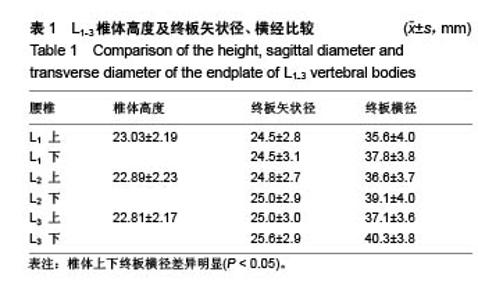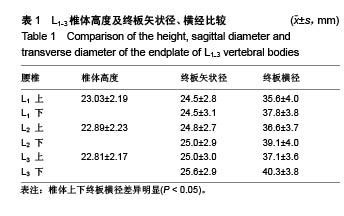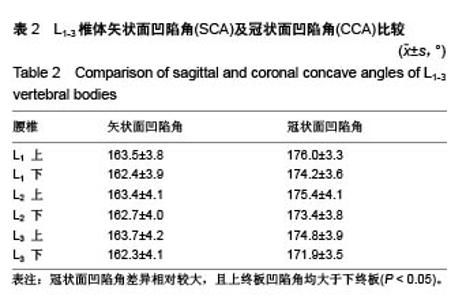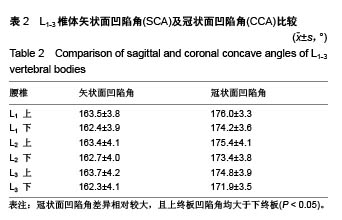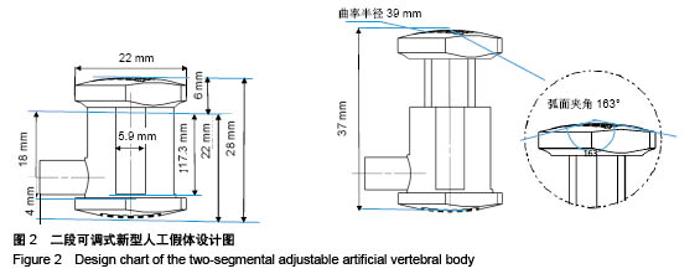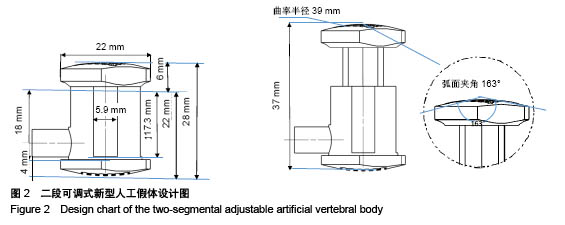| [1] Awwad W, Bourget-Murray J, Zeiadin N, et al. Analysis of the spinal nerve roots in relation to the adjacent vertebral bodies with respect to a posterolateral vertebral body replacement procedure. J Craniovertebr Junction Spine. 2017;8(1):50-57. [2] Suzuki T, Abe E, Miyakoshi N, et al. Posterior-approach vertebral replacement with rectangular parallelepiped cages (PAVREC) for the treatment of osteoporotic vertebral collapse with neurological deficits. J Spinal Disord Tech. 2013;26(5): E170-E176. [3] Ropper AE, Ropper AH. Acute spinal cord compression. N Engl J Med. 2017;376(14):1358-1369. [4] Lau D, Song Y, Guan Z, et al. Radiological outcomes of static vs expandable titanium cages after corpectomy: a retrospective cohort analysis of subsidence. Neurosurgery. 2013;72(4):529-539. [5] Holland CM, Bass DI, Gary MF, et al. Thoracic lateral extracavitary corpectomy for anterior column reconstruction with expandable and static titanium cages: clinical outcomes and surgical considerations in a consecutive case series. Clin Neurol Neurosurg. 2015;129:37-43. [6] Yang X, Chen Q, Liu L, et al. Comparison of anterior cervical fusion by titanium mesh cage versus nano-hydroxyapatite/polyamide cage following single-level corpectomy. Int Orthop. 2013;37(12):2421-2427. [7] Chen Y, Chen D, Guo Y, et al. Subsidence of titanium mesh cage: a study based on 300 cases. J Spinal Disord Tech. 2008; 21(7):489-492. [8] Zhang H, Zeng K, Yin X, et al. Debridement, internal fixation, and reconstruction using titanium mesh for the surgical treatment of thoracic and lumbar spinal tuberculosis via a posterior-only approach: a 4-year follow-up of 28 patients. J Orthop Surg Res. 2015;10:150. [9] Wu J, Luo D, Ye X, et al. Anatomy-related risk factors for the subsidence of titanium mesh cage in cervical reconstruction after one-level corpectomy. Int J Clin Exp Med. 2015;8(5): 7405-7411. [10] Lowe TG, Hashim S, Wilson LA, et al. A biomechanical study of regional endplate strength and cage morphology as it relates to structural interbody support. Spine (Phila Pa 1976). 2004;29(21):2389-2394. [11] Duran S, Cavusoglu M, Hatipoglu HG, et al. Association between measures of vertebral endplate morphology and lumbar intervertebral disc degeneration. Can Assoc Radiol J. 2017;68(2):210-216. [12] Graillon T, Rakotozanany P, Blondel B, et al. Circumferential management of unstable thoracolumbar fractures using an anterior expandable cage, as an alternative to an iliac crest graft, combined with a posterior screw fixation: results of a series of 85 patients. Neurosurg Focus. 2014;37(1):E10. [13] Xiong Y, Ren C, Zhang B, et al. Analyzing the behavior of a porous nano-hydroxyapatite/polyamide 66 (n-HA/PA66) composite for healing of bone defects. Int J Nanomedicine. 2014;9:485-494. [14] Zhang Y, Deng X, Jiang D, et al. Long-term results of anterior cervical corpectomy and fusion with nano-hydroxyapatite/polyamide 66 strut for cervical spondylotic myelopathy. Sci Rep. 2016;6:26751. [15] Kotani Y, Abumi K, Shikinami Y, et al. Artificial intervertebral disc replacement using bioactive three-dimensional fabric: design, development, and preliminary animal study. Spine (Phila Pa 1976). 2002;27(9):929-935; discussion 935-936. [16] Grant JP, Oxland TR, Dvorak MF. Mapping the structural properties of the lumbosacral vertebral endplates. Spine (Phila Pa 1976). 2001;26(8):889-896. [17] Aharinejad S, Bertagnoli R, Wicke K, et al. Morphometric analysis of vertebrae and intervertebral discs as a basis of disc replacement. Am J Anat 1990;189(1):69-76. [18] Tan SH, Teo EC, Chua HC. Quantitative three-dimensional anatomy of cervical, thoracic and lumbar vertebrae of Chinese Singaporeans. Eur Spine J. 2004;13(2):137-146. [19] Reinhold M, Schmoelz W, Canto F, et al. A new distractable implant for vertebral body replacement: biomechanical testing of four implants for the thoracolumbar spine. Arch Orthop Trauma Surg. 2009;129(10):1375-1382. [20] Closkey RF, Parsons JR, Lee CK, et al. Mechanics of interbody spinal fusion. Analysis of critical bone graft area. Spine (Phila Pa 1976) 1993;18(8):1011-1015. [21] Wang Y, Battié MC, Videman T. A morphological study of lumbar vertebral endplates: radiographic, visual and digital measurements. Eur Spine J 2012;21(11):2316-2323.[22] 王娇,刘洋,张晓玲,等.Mimics软件在医学图像三维重建中的应用[J].医疗卫生装备, 2015,36(2):115-118.[23] Hofstetter CP, Chou D, Newman CB, et al. Posterior approach for thoracolumbar corpectomies with expandable cage placement and circumferential arthrodesis: a multicenter case series of 67 patients. J Neurosurg Spine. 2011;14(3):388-397. [24] Skovrlj B, Guzman JZ, Caridi J, et al. Posterior-Only Circumferential Decompression and Reconstruction in the Surgical Management of Lumbar Vertebral Osteomyelitis. Global Spine J 2016;6(1):e35-e40. [25] Jandial R, Kelly B, Chen MY. Posterior-only approach for lumbar vertebral column resection and expandable cage reconstruction for spinal metastases. J Neurosurg Spine. 2013;19(1):27-33. [26] Wang S, Zhang J, Qiu G, et al. Posterior-only hemivertebra resection with anterior structural reconstruction with a titanium mesh cage and short segmental fusion for the treatment of congenital scoliokyphosis: the indications and preliminary results. Spine (Phila Pa 1976). 2017;42(22):1687-1692.[27] Sasani M, Ozer AF. Single-stage posterior corpectomy and expandable cage placement for treatment of thoracic or lumbar burst fractures. Spine (Phila Pa 1976). 2009;34(1): E33-E40. [28] Lee JH, Oh HS, Choi JG. Comparison of the Posterior Vertebral Column Resection With the Expandable Cage Versus the Nonexpandable Cage in Thoracolumbar Angular Kyphosis. Clin Spine Surg. 2017;30(4):E398-E406. [29] Fang T, Dong J, Zhou X, et al. Comparison of mini-open anterior corpectomy and posterior total en bloc spondylectomy for solitary metastases of the thoracolumbar spine. J Neurosurg Spine. 2012;17(4):271-279. [30] Abe E, Sato K, Tazawa H, et al. Total spondylectomy for primary tumor of the thoracolumbar spine. Spinal Cord. 2000;38(3):146-152. [31] Crocker M, James G, Ibrahim A, et al. Posterior approach vertebrectomy in the thoracolumbar spine with expandable cage reconstruction: indications and techniques based on eight cases. Br J Neurosurg. 2008;22(2):235-240. [32] Wang L, Song Y, Pei F, et al. Application of nano-hydroxyapatite/polyamide 66 cage in reconstruction of spinal stability after resection of spinal tumor. Zhongguo Xiu Fu Chong Jian Wai Ke Za Zhi. 2011;25(8):941-945. [33] Abd EH, Helmy Y, El-Kholy B, et al. In vivo animal histomorphometric study for evaluating biocompatibility and osteointegration of nano-hydroxyapatite as biomaterials in tissue engineering. J Egypt Natl Canc Inst. 2010;22(4): 241-250. [34] Xu Q, Lu H, Zhang J, et al. Tissue engineering scaffold material of porous nanohydroxyapatite/polyamide 66. Int J Nanomedicine. 2010;5:331-335. [35] Caroli E, Orlando ER, D'Andrea G, et al. Anterior cervical fusion with interbody titanium cage containing surgical bone site graft: our institution's experience in 103 consecutive cases of degenerative spondylosis. J Spinal Disord Tech. 2007;20(3):216-220. |
